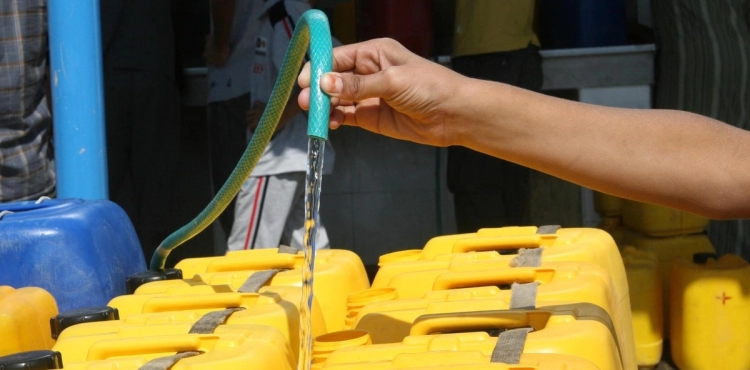Local newspapers were quoted. On Tuesday the results of a new report by experts from Tel Aviv University and the University of Ben Gurion, confirming that the excess withdrawal of groundwater has been delivered in contamination of most of them and that next year the amount of water usable in Gaza according to World Health Organization (WHO) standards will reach zero.
The collapse of the water, sewage and electricity infrastructure in the Gaza Strip due to the Israeli blockade endangers groundwater, seawater, recreational beaches and desalination facilities, the report said
The report, which addressed the environmental impacts of the Gaza situation on Israel, said that the "burning of waste and incendiary balloons has recently created the problem of air pollution in Israel", noting that the Gaza Strip needs 450 megawatts of electricity, but the current share of the sector is 240 MW.
"The lack of electricity is affecting the operation of sewage treatment plants, which causes about 70 percent of Gaza´s wastewater flow daily towards the sea without treatment," he said.
According to data from the Israel Water and Lake Research Institute, "sewage pollution led three years ago to shell the desalination plant in Ashkelon, and contamination can lead to higher concentrations of bacteria up to the Ashdod area."
"Half of the sea shores in Gaza are not suitable for swimming due to the concentration of bacteria in the water, as a result of the flow of sewage, which puts at risk an important source of groundwater wells that are found in the valley of the "Shalas" in southeastern Ashkelon, the report said.
"Israel is shifting sewage to the refinery in Sderot, but leaks during winter floods still endanger groundwater," he said, noting that there is "another risk of mosquito development that can spread the virus of the Nile fever." according to Arabic 21
The report´s authors warned of "increased atmospheric pollution in the Gaza envelope, where the concentrations of atmospheric pollution measured in the area last summer were compared after the firing of the incendiary balloons and between the previous year´s concentrations and found elevated concentrations of small-diameter contamination bacteria that could penetrate Breathing ".
"In 2007, the highest concentration was 37.25 mcg per cubic meter, but in 2018 the concentration reached 51 μg / m3," pointing out that environmental pollution is the result of an uncontrolled waste incineration in Gaza´s garbage collection sites, as well as fires in forests and agricultural areas due Blazing Balloons ".
According to the report, "Israel can significantly reduce the impact of environmental pollution from Gaza by monitoring the quality of seawater, closing desalination facilities in Ashkelon when needed, and diverting wastewater to a desalination facility in Israel. Gaza and the increase in the amount of garbage makes it difficult for Tel Aviv to do so in the future. "
The report concludes that the "very serious health and environmental reality in Gaza has direct implications for Israeli national security."
"Without quick action, we will find the spread of epidemics and pollution that would take a lot of lives, whether in Israel or Gaza, which no Iron Dome or wall will be able to prevent," said Gideon Bromberg, director of the Middle East organization, who oversaw the report.
The British newspaper Independent warned this year that the Gaza Strip could soon become uninhabitable because of the water shortages caused by climate change and the collapse of infrastructure.
The newspaper reported in a lengthy report by British journalist Bill Truo that 97% of Gaza´s groundwater is currently not potable due to excessive pumping from the only water source in the area of ​​the aquifer on the Sea coast.












